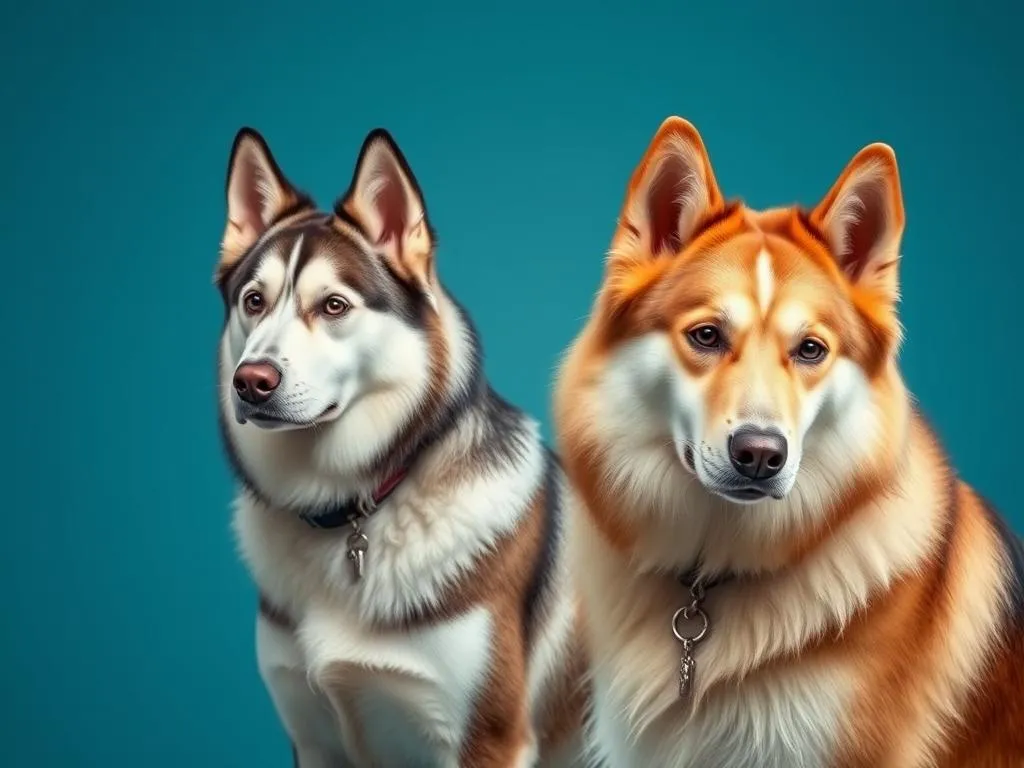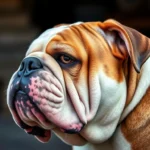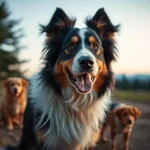
Introduction
Dog breeds come in a dazzling variety, each with unique traits that reflect their history and purpose. Understanding these specific breeds is crucial, especially for potential pet owners looking to find a dog that suits their lifestyle.
Among the many categories of dogs, Scandinavian dog breeds stand out due to their rich heritage and adaptability to various environments. These breeds hail from the Nordic countries, including Norway, Sweden, Finland, and Iceland, where they were developed for various roles, from working dogs to beloved family companions. This article delves into the characteristics, popular breeds, health considerations, training needs, and their roles in modern society.
Characteristics of Scandinavian Dog Breeds
Physical Traits
Scandinavian dog breeds exhibit a wide range of physical characteristics. They can be small, medium, or large, depending on the breed. For instance, the Norwegian Elkhound is a robust medium-sized dog, while the Icelandic Sheepdog is smaller and more compact.
Coat types also vary significantly among these breeds. Many have thick, double coats designed to withstand harsh Nordic climates. Color variations can range from the gray of the Norwegian Elkhound to the bright red of the Finnish Spitz. Distinctive features unique to Scandinavian breeds include erect ears, bushy tails, and a strong build, which reflect their functional origins.
Temperament and Behavior
The temperament of Scandinavian dog breeds is generally characterized by loyalty, independence, and playfulness. Most breeds are friendly and make excellent family pets, while others may exhibit a more reserved nature. For example, the Karelian Bear Dog is known for its strong guarding instincts, while the Swedish Vallhund is sociable and energetic.
Socialization is essential, as these dogs often thrive in family environments, getting along well with children and other pets. Their adaptability allows them to adjust to various living situations, whether in urban apartments or rural homes, making them versatile companions.
Adaptability
Scandinavian dog breeds are known for their adaptability to different living environments. Many can thrive in urban settings, provided they receive adequate exercise and mental stimulation. Most Scandinavian breeds require regular physical activity, as their energy levels can be high. Daily walks, playtime, and engaging activities are crucial to keeping these dogs happy and healthy.
Popular Scandinavian Dog Breeds
Norwegian Elkhound
The Norwegian Elkhound has a long history as a hunting and herding dog, dating back over a thousand years. This breed is medium-sized, with a sturdy build and a thick, weather-resistant coat that comes in shades of gray.
Known for their friendly and loyal temperament, Norwegian Elkhounds are great family dogs. They require ample exercise, making them well-suited for active households. A secure yard or regular outings in nature is ideal for meeting their physical and mental needs.
Swedish Vallhund
The Swedish Vallhund is a small to medium-sized breed that resembles a Corgi. With a history tied to Viking culture, this breed was primarily used for herding livestock. They have a short, dense coat that can come in various shades of gray, sable, or red.
Swedish Vallhunds are intelligent and eager to please, making them relatively easy to train. Their playful nature and social disposition make them excellent companions for families, although they require regular exercise to keep their energy levels in check.
Finnish Spitz
The Finnish Spitz is often regarded as the national dog of Finland. This breed has a fox-like appearance, characterized by a bushy tail and a striking red coat. Finnish Spitz are known for their lively and affectionate temperament, making them great family pets.
Their origins as hunting dogs mean they have a playful and energetic disposition. They excel in activities that challenge their intelligence, such as agility training and obedience classes. Regular exercise and mental stimulation are essential for their well-being.
Icelandic Sheepdog
The Icelandic Sheepdog is a unique breed with a rich history in Iceland. It is a medium-sized dog with a double coat and a distinct curly tail. This breed was traditionally used for herding sheep and has a friendly, outgoing temperament.
Icelandic Sheepdogs are known for their intelligence and playful nature. They thrive in social environments, making them excellent companions for families. Regular training and socialization are important to ensure they develop good behavior and manners.
Karelian Bear Dog
The Karelian Bear Dog is a powerful and robust breed originally used for hunting large game. They have a thick, weather-resistant coat and a strong build. This breed is known for its loyalty and protective instincts, making it an excellent watchdog.
While Karelian Bear Dogs can be independent and strong-willed, they are also trainable with consistent and positive reinforcement. They require ample exercise and mental challenges to keep them engaged, making them suitable for active individuals or families.
Health Considerations
Common Health Issues
Like all dog breeds, Scandinavian dog breeds can have genetic predispositions to certain health issues. Common problems include hip dysplasia, eye disorders, and skin conditions. It’s essential for potential owners to be aware of these issues and seek reputable breeders who prioritize health testing.
Regular veterinary check-ups are vital for early detection and prevention of health issues. Additionally, potential owners should be informed about the breed’s specific health concerns to ensure they can provide the best care possible.
Preventative Care
Preventative care is crucial for maintaining the health of Scandinavian dog breeds. Regular vet visits for vaccinations, dental care, and health screenings help keep dogs in optimal health. Owners should be proactive about scheduling these appointments to catch any potential issues early.
Diet and Nutrition
Nutrition plays a significant role in the health of Scandinavian dog breeds. Each breed has specific dietary needs that may vary based on age, size, and activity level. High-quality dog food tailored to the breed’s specific requirements is recommended. Consult with a veterinarian to determine the best dietary plan for your dog.
Training and Socialization
Basic Training Techniques
Training is essential for all Scandinavian dog breeds. Early training helps establish good behavior patterns and fosters a strong bond between dog and owner. Positive reinforcement techniques, such as treats and praise, are effective methods for training these intelligent breeds.
Consistency in training is crucial, as many Scandinavian breeds are independent thinkers. Establishing clear commands and routines will help facilitate successful training outcomes.
Socialization Skills
Socialization is a key aspect of raising a well-adjusted dog. Exposing Scandinavian dog breeds to various environments, people, and other pets from a young age helps them develop confidence and adaptability. Introduce your dog to different situations gradually, ensuring positive experiences that encourage good behavior.
Dealing with Behavioral Issues
Behavioral issues can arise in any breed, including Scandinavian dog breeds. Common problems may include excessive barking, digging, or separation anxiety. Identifying the underlying cause of these behaviors is the first step in addressing them.
Employ strategies such as redirecting attention, providing mental stimulation, and ensuring adequate exercise. If issues persist, consulting a professional trainer or behaviorist can help provide tailored solutions.
The Role of Scandinavian Dog Breeds in Modern Society
Working Roles
Historically, Scandinavian dog breeds have held various working roles, including herding, hunting, and guarding. Many of these breeds still excel in these traditional roles today, contributing to agricultural practices and outdoor activities.
In modern society, these breeds have adapted to new roles, such as therapy and assistance dogs. Their intelligence and strong work ethic make them suitable for various tasks, ensuring their relevance in contemporary settings.
Companionship and Family Pets
The charm of Scandinavian dog breeds extends beyond their working capabilities; they are also beloved companions. Many owners report that these breeds are affectionate, loyal, and great with children, making them ideal family pets. Their engaging personalities and playful nature provide endless joy and companionship.
Cultural Significance and Events
Scandinavian dog breeds hold cultural significance in their respective countries. Various events and festivals celebrate these breeds, showcasing their history and importance to local communities. Breed-specific clubs and organizations work tirelessly to preserve and promote the unique traits of these dogs.
Conclusion
In summary, Scandinavian dog breeds are notable for their diverse characteristics and adaptability, making them suitable for various lifestyles. From the loyal Norwegian Elkhound to the energetic Finnish Spitz, each breed brings unique qualities that enrich the lives of their owners.
These dogs not only serve as companions but also maintain their historical roles in modern society. Understanding their traits, health needs, and training requirements can help prospective owners provide the best care possible. Exploring the world of Scandinavian dog breeds may lead you to the perfect canine companion for your family.









